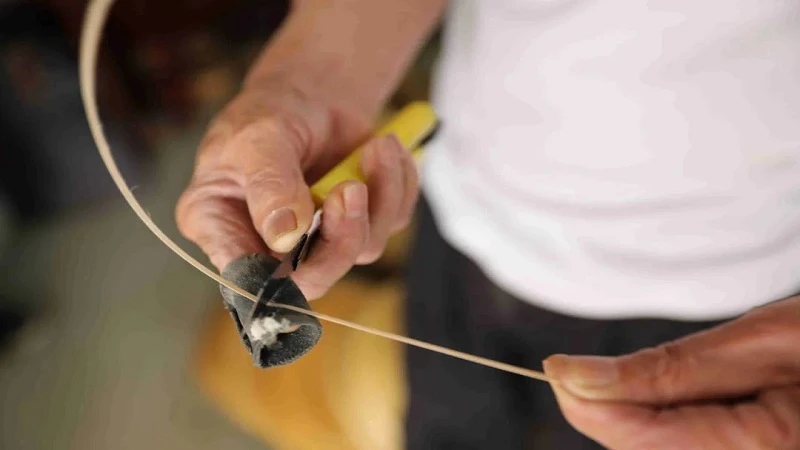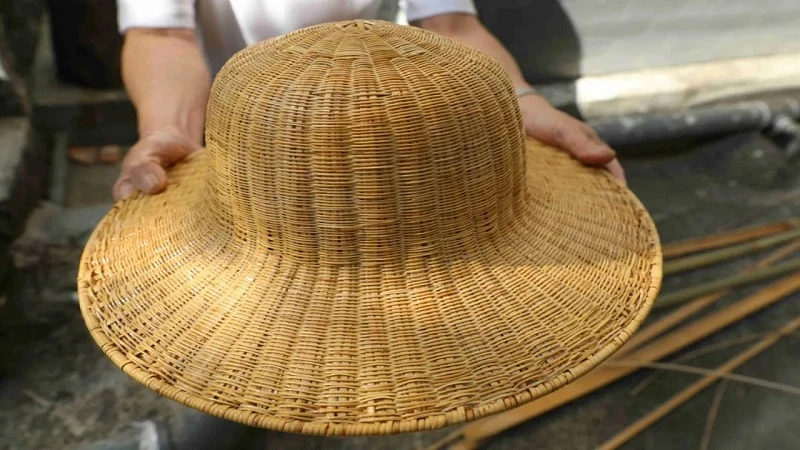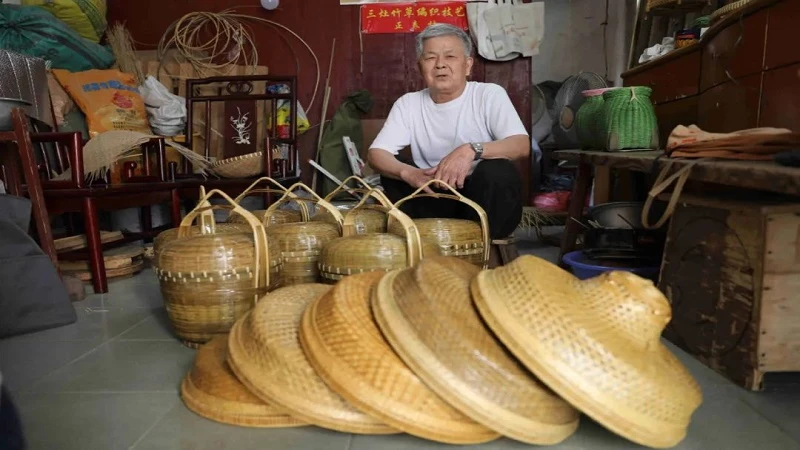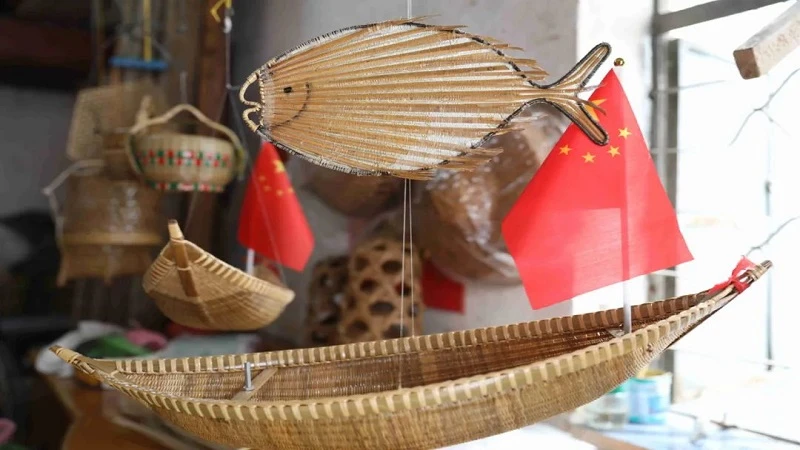In today's fast-paced world, many traditional arts are fading into obscurity, replaced by modern innovations. Yet, some artisans remain committed to preserving their craft, ensuring that it survives for future generations. One such individual is Tang Hejia (汤何佳), a 73-year-old master of bamboo and straw weaving, who has devoted his life to the preservation and promotion of this time-honored art. In the small town of Sanzao, Guangdong, Tang Hejia's hands bring bamboo and straw to life, weaving not only practical items but also the dreams of cultural heritage.
The Legacy of Bamboo and Straw Weaving in Sanzao
For many, memories of childhood include simple bamboo baskets or trays, common household items in rural China. However, in Sanzao (三灶), this weaving tradition has taken on a special significance. Known as the Sanzao Bamboo and Straw Weaving Technique (三灶竹草编织技艺), this craft was officially recognized in 2015 as part of Guangdong's intangible cultural heritage. This honor not only acknowledges the artistry involved but also ensures its preservation for future generations.
Bamboo and straw weaving in Sanzao is much more than a craft; it is an embodiment of the region's agricultural and marine cultures. The products, such as crab skeleton baskets, flower trays, and wicker gift baskets, reflect the traditional ways of life of Sanzao's coastal communities. This practice not only speaks to the resourcefulness of the region's inhabitants but also offers valuable insights for sustainable and circular economies today.
The Master Behind the Craft
Tang Hejia's journey with bamboo weaving began at the tender age of 11 when he first learned the art. For many years, he worked in a village weaving team, continuing his craft even after the group disbanded. As one of the few remaining artisans who still practices the Sanzao bamboo and straw weaving technique, Tang has become an important figure in the preservation of this cultural heritage. His dedication is evident in the meticulous attention to detail that goes into every piece he creates.
In recent years, Tang has gained recognition beyond his village. In 2019, he was invited to create traditional bamboo and straw works for the Zhuhai Museum, where his intricate pieces are now displayed. From baskets to artistic sculptures, each of his creations showcases not only the technical skill of bamboo weaving but also his deep understanding of the material.
Tang personally selects every piece of bamboo he uses, often venturing into the mountains to harvest it himself. For him, the quality of the material is paramount. He explains that the length of the bamboo nodes plays a critical role in determining the function of each part. By carefully balancing long and short nodes, Tang ensures that each element of his woven pieces has a specific purpose. After selecting the bamboo, he spends hours meticulously cutting, shaving, and polishing the bamboo strips until they are the perfect size—some as thin as two millimeters.
It can take up to 15 days to complete a single work, with much of that time dedicated to preparing the bamboo. Tang's approach is one of patience and precision, as he believes that crafting high-quality pieces takes time and care. His finished works, such as the yellow-lined crab baskets and double-layered lidded baskets, reflect a timeless beauty, with clear and unique weaving patterns that are distinct to the region.
A Craft at Risk
Despite Tang's dedication and mastery, the future of Sanzao bamboo and straw weaving is uncertain. As society changes and modern production methods dominate, traditional handcrafts are often left behind. Fewer people see the value in time-consuming manual work, especially when cheaper, mass-produced alternatives are readily available. As a result, the demand for handmade bamboo products has dwindled, and young people are reluctant to take up the craft.
The intricate and labor-intensive nature of bamboo weaving also makes it difficult to learn, adding another barrier for potential apprentices. Tang has found it challenging to pass on his skills, as there is little interest among the younger generation. The economic return from selling bamboo products is limited, which further discourages individuals from dedicating time to mastering the art.
In an effort to raise awareness and inspire new interest in the craft, Tang has participated in various exhibitions and demonstrations at the provincial, city, and district levels. He also visits local schools to teach students about bamboo weaving, hoping to ignite a passion for the art among the youth. His efforts are not only about preserving the technique but also about ensuring that the rich cultural history behind it is not lost.
Adapting to a Changing Market
In response to the shifting market, Tang has begun to diversify his work. Rather than focusing solely on traditional bamboo products, he now creates customized pieces based on client requests. This move towards a more market-oriented approach allows him to keep the craft alive while catering to modern tastes. By blending traditional techniques with contemporary designs, Tang hopes to breathe new life into the bamboo weaving industry.
Sanzao bamboo and straw weaving represents more than just a craft—it is a testament to the resilience and creativity of the people of Sanzao. As modern life continues to evolve, there is still much that can be learned from traditional practices like these. Not only do they offer a glimpse into the past, but they also provide valuable lessons for sustainable living and the preservation of cultural heritage.
Through Tang Hejia's unwavering dedication, the dream of cultural heritage lives on, woven into every bamboo basket and tray. However, the future of this ancient craft now depends on the efforts to inspire and engage a new generation.




